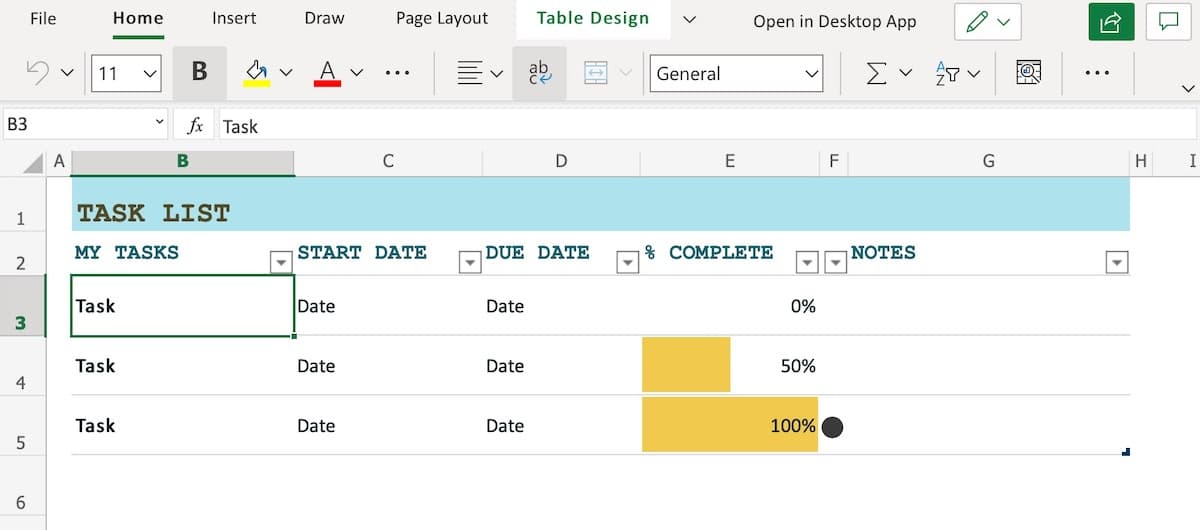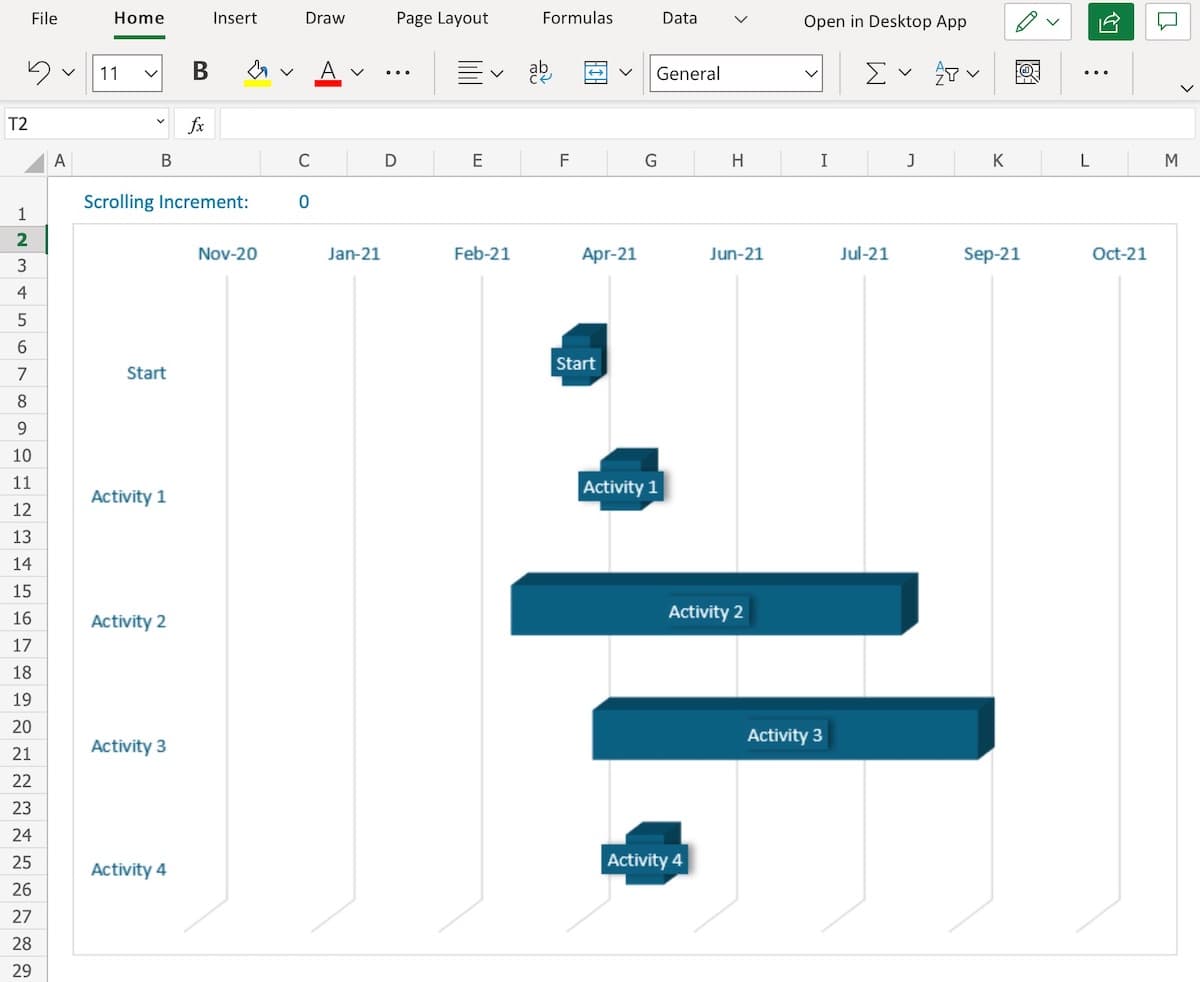How to use Excel for project management
Project management can mean different things for different businesses. For large companies, it may involve multiple users, big budgets, and multiple deadlines spread out over months or years. For small companies or solopreneurs, it may only involve a few team members working on one project at a time.
If you've looked at many of the project management software options available lately, you may have been overwhelmed by the complexity and the price. It may be tempting to just use Excel or Google Sheets to manage your projects since they are readily available and you likely already know how to use them.
That may not be a bad idea. While spreadsheet programs weren't intended to manage projects, they have a lot of functionality and may be able to handle the job, depending on your business needs.

When should you use Excel for project management?
You're already proficient in Excel. If you're already a pro in Excel, you may be able to incorporate project management in your workflow without much additional effort. On the other hand, if you would have to learn how to use Excel for its intended use on top of learning to use it to manage projects, it may be a more difficult undertaking.
Your projects are simple. For businesses that only work on small projects, Excel can be enough to keep tasks on track. If everything you need to track can be kept in a simple spreadsheet, you can probably forego project management software.
You work alone. If you're a sole freelancer or a firm with just one or two other members, a robust project management system may be overkill. The communication aspects of project management may not be important if you work alone or with one partner.
You can't afford another system. Although not all project management solutions are expensive, if you can't spare the investment, sticking with a free option like Google Sheets may be your only option.
Cons of using Excel for project management

It's difficult to manage more than a few employees. A spreadsheet usually isn't robust enough to handle all of the tasks that come with having a larger team. Once you have multiple people working on a task or multiple tasks, project management software becomes a more valuable option.
There's no way to communicate. Excel doesn't have communication features. If you need to communicate with your team members or clients regularly, this can get frustrating quickly.
It's hard to prioritize information. With spreadsheets, it can be difficult to highlight the information that matters most on your current project. You may end up wasting time and money sorting through irrelevant details.
How to Create a task list in Excel

A task list is essential to any project management system. You can create one in Excel using the following steps:
- Add column headers. You can use headings such as task name, due date, status, next steps, or whatever is appropriate for your project.
- Fill in the columns for each task.
- To increase functionality, add some filters. Choose a heading and click on "Sort and Filters."
- Click on "Filters" and choose the heading you want to use to filter your list. You may choose to filter by status so that you can only see the tasks that are upcoming or urgent.
How to create a timeline in Excel
Excel project management can be challenging if you aren't familiar with the tools. Creating a timeline in Excel can help you set up a visual display of when tasks are due to help your team stay on track. You'll need to input your data before you can create the timeline. To begin, you'll need to arrange your data in chronological order. You'll need at least three columns of data including:

- Unit of time. These will be the due dates of each project.
- Event name. These will be the names of the tasks.
- Event height and direction. This will tell Excel where to place the event name on the number line. Positive numbers go above the line, and negative numbers go below. Vary these so that your events are staggered and won't overlap.
Once you have your data entered, create your chart by following these steps:
- Select the columns under "unit of time" and "event height and direction."
- Click "Insert," then "Charts," then "Insert Column or Bar Chart."
- Click the option "Clustered Column," in the 2-D Column Charts.
- Click on the "Chart Elements" option, then click on the arrow to the right of "Data Labels," then click "More Options."
- From the "Format Data Labels" menu, uncheck the "Value" option and check "Value from Cells."
- From the "Data Label Range" dialog box, select the cells of the Event Name column and click OK.
- Now that your events are listed on the chart, you can customize the look of the bars under "Chart Tools."

Switch from Excel to Breeze for project management
While Excel can be used to manage projects, it can be clunky and time-consuming. When managing your projects starts to take as much time as working on them, it's time to look for an Excel project management alternative. Breeze is a project management tool that helps your team work more collaboratively and boosts your productivity. It's simple to use with just the right amount of features. Breeze is streamlined enough to be intuitive but feature-rich enough to keep your entire team on track.
Breeze offers everyone on your team an overview of your project plan with a project board. Every team member can access a detailed task list directly from the project board. Everyone will know the status of each task and what needs to be done next with drag-and-drop tools that let you update statuses and show progress.
You can add tags, color code, set due dates, assign tasks, add files, create custom fields, and import tasks with one click using Breeze's easy-to-use dropdown menu. The built-in automation function makes it a snap to create automatic actions for each aspect of a task.
Bigger tasks can be broken down into to-lists. Breeze helps you make sure nothing gets left out by allowing you to create detailed to-do lists and assign them to the appropriate person. If needed, you can assign it to multiple people. You can easily break your to-dos down into smaller tasks if they start getting too big. Like tasks, to-do lists can be copied or imported. If you find yourself making the same to-do list repeatedly, you can make a template to automate the process.
Breeze task lists
A recent update to Breeze includes a new an improved "List View" . List view offers an alternative to the project board view. This is a great option when you need to see a lot of information on one screen.

List view is also ideal for people who prefer to start with a task list and then switch to a project board later to flesh out the details of a project. You can switch between the list view and board view at any time. All the tasks are synced and the same on both views..
Breeze task management
Breeze brings order to the chaos of complex task management. It lets you organize your work visually so you can see at a glance what's coming up and what needs to be done to keep your business moving forward.

Keep your clients informed with Breeze's collaborative tools. You can mention them on a task, have private discussions, send reports, and more.
Breeze helps you evaluate your business's productivity. You can see where your team spends its resources, including time and money. You can generate reports for project totals, time tracking, and tasks. Sorting them by users and products lets you see where you're excelling and where you need to improve.
Breeze project timeline
One of the most crucial parts of project management is keeping the big picture in mind. Without a way to visualize your timeline, you may not realize you have three big deadlines scheduled for the same day. Breeze automatically generates a timeline view to provide your team and clients with a visual overview of the steps of your project.

Unlike the tedious method of creating a project timeline in a spreadsheet, creating one in Breeze is super simple. Once you list all of your tasks, subtasks, and to-dos that need to be completed for your project and set due dates, Breeze will automatically produce a timeline view. You can then make adjustments as needed using drag-and-drop tools to keep your team up-to-date.
You can see all of your projects in the same timeline so you can keep track of everything at once. The project timeline's default setting is the one-month view. However, you can set it for a weekly view for short-range planning or check the three-month view to get an overview of what's coming up. If you notice you've overlooked something when you see your timeline, you can add it directly in the timeline view. All of the filters and bookmarking features in Breeze work directly from the timeline view as well.
Breeze is the most effective way to keep your team working together. It's the simple, intuitive project management system your whole team will love using.
